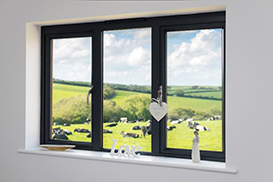
Most of us have little household repair jobs we intend to get to some day, once we have the time or money. A problem with our windows, however, demands more urgent attention, if we’re to keep our homes comfortable and secure.
In this article, we identify the faults most commonly found in generic windows and give advice on how to rectify them.
If you’re interested in replacing existing windows with something stronger and more durable, then get in touch with the Origin team today to talk about aluminium windows.
Your window won’t open or close properly
This probably tops the list of window-related issues. There are a number of reasons a window can become difficult to open or close.
Problems with the sash
Dropped sash
A window sash is the profile framework in the window that opens and keeps the glass in place. Most sashes will drop slightly without causing any problems. But sometimes they drop too far, affecting the window in the process.
To check whether your sash has dropped, look for gaps above the handle, or signs that it’s shifted within the frame. Simply removing and replacing the sash often rectifies the fault.
While the sash is off, check the screws around the window, tighten all the loose ones and replace any that are stripped.
Dirty tracks
In particular, sliding windows have sashes that slide along tracks at the top and bottom of the window frame. If the tracks get dirty or dusty, the sash can often stick. The best way to fix this is to clean and lubricate the tracks.
The windows might also stick due to layers of old paint, depending on how your window was finished. Use a putty knife or a stripping knife (any knife with a flat blade will do) and go around the frame, chipping away any old paint that might be jamming the window. If the window frees up, finish off by smoothing the frame gently with some sandpaper.
Weatherstripping issues
Another cause of sticking is the weatherstripping sealant. If this has come away slightly, it could be getting in the way of the window opening and closing. It might take a bit of brute force to get it open, but once you’ve done that you can replace the defective bit of weatherstripping and spray the rest with a lubricant (see ‘Problems with the hinges and other mechanisms’ below).
Problems with the hinges and other mechanisms
If the hinges are stiff, try cleaning and lubricating them with some WD-40, white lithium grease or Vaseline and see if they move more easily. Rusty or worn hinges might not respond as well to lubrication and may need replacing altogether.
Most casement windows, for example, operate on a hinge which is attached to the frame and the sash. Over time, some of this hardware can fail or suffer damage.
If you notice a gap between the sash and the part of the frame where the hinges are fixed, this suggests the hinges are worn. Replacing them is a fairly easy job.
Problems with the frame
Settling
If you’ve checked the screws and hinges and the sash is still obstructing the window, it could be that the window frame has moved slightly as the house has settled.
A house settles when its weight slowly compresses the soil underneath it, causing the building to lean at a slight angle. This makes windows hard to open because they’re no longer straight and level.
This is a serious problem and is very difficult to fix without professional help, particularly if it requires work to the house’s foundations.
Corroded wooden windows
It’s not uncommon for wooden frames to swell in damp weather, making it much harder to open the windows.
Some people recommend rubbing candle wax where the window is sticking. Others advise waiting until the windows are dry, then sanding the wood. You’ll need to remove the old paint or varnish first—this alone should make the window move more smoothly. Once you have the frames sanded, you can repaint or add new varnish.
If sanding doesn’t work, you can plane the wood. But be careful you don’t shave off too much!
At Origin, we make all our window frames from aluminium, which won’t be able to flex, warp or corrode. And compared to wooden frames, our windows require very little maintenance.
Problems with the crank
This issue is mostly confined to casement windows, which open and close by turning the crank handle. If turning the handle isn’t moving the mechanism in any way, it’s broken. While replacing it isn’t too big a job, it’s probably one for a professional tradesman, who will be able to measure the right size for your window.
Your window is letting in draughts
Not only can a draught in your home make you feel cold and uncomfortable, it can also dramatically increase your energy bills and even compromise your window’s security. Not to mention, you’ll be able to hear what’s going on outside a lot more, which can be problematic if you’re trying to sleep!

If you feel a draught coming in through your window, it’s likely to be a fault with the seal that was applied when your windows were installed. Or, if you’ve fitted your own weatherstripping in the past, perhaps it’s come loose or worn away. Wherever the gap might be, you need to fill it.
The Energy Saving Trust has a useful guide to draughtproofing. This covers weatherstripping and how you can buy special strips of foam to plug any unwanted gaps around your windows.
Our aluminium windows are rated A++, the highest energy efficiency rating there is. This means they’re among the best windows available when it comes to keeping cold air out and warm air in. Read more on Origin’s energy-efficient windows here.






